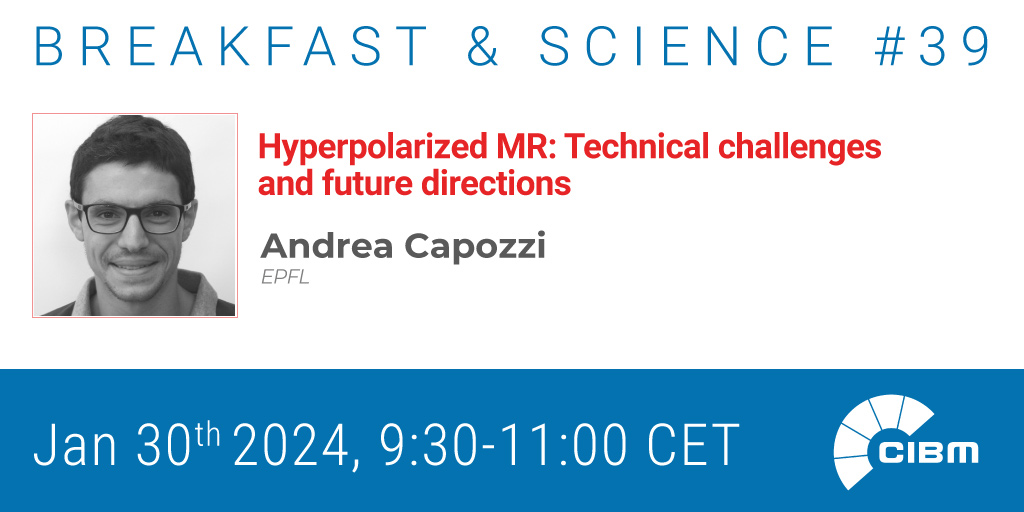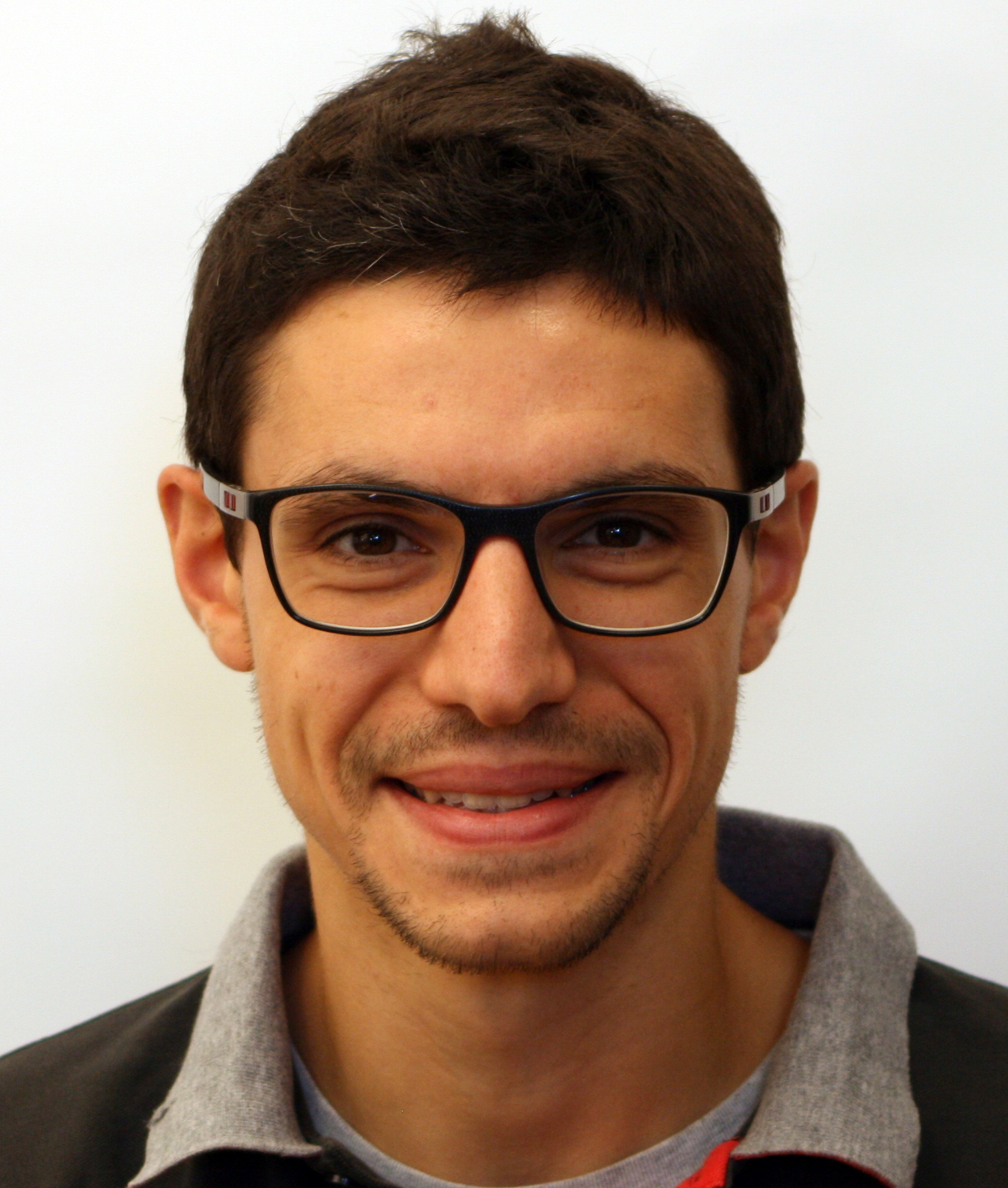
On the 30th of January 2024, the 39th CIBM Breakfast & Science Seminar was given by Asst. Prof Andrea Capozzi, EPFL and Technical University of Denmark. The event was chaired by Dr. Cristina Cudalbu, CIBM MRI EPFL Animal Imaging and Technology Section.
Hyperpolarized MR: Technical challenges and future directions
Abstract
As of today, dissolution Dynamic Nuclear Polarization (dDNP) is the only available hyperpolarization technique for 13C-MRI in patients. Despite the clear path towards personalized medicine that dDNP is paving as an alternative and/or complement to PET, the technique struggles to enter everyday clinical practice. To convince medical doctors of the unmatched potential of this technique, still a lot has to be done to make it simpler and reliable. For instance, differently from PET, hyperpolarized (HP) MR-contrast agents cannot be transported and have to be produced on-site, using expensive and technically demanding hardware (i.e. the polarizer).
In this talk I will focus on three key technological improvements that have characterized my research during the last 4 years:
– how to get high polarization (thus high metabolic image contrast)
– how to increase the throughput of HP MR-contrast agents
– how to decentralize the production of HP MR-contrast agents.
Andrea Capozzi,
EPFL
About the speaker
My research field deals with hyperpolarized Magnetic Resonance Imaging (MRI) and Spectroscopy (MRS) via Dissolution Dynamic Nuclear Polarization (dDNP). Driven since the beginning by interdisciplinary scientific interests, I achieved the master’s degree following courses across Condensed Matter Physics and Bio-Physics (Pavia, Italy). Afterwards, in 2012, I moved to EPFL to start a PhD thesis in dDNP under the supervision of Prof Arnaud Comment. Among other projects, I was in charge of the development and implementation of UV-induced non-persistent radicals for dDNP and the investigation of DNP spin physics at high magnetic field.
After my PhD, I was awarded a Marie-Curie grant and I moved to the Technical University of Denmark to join Prof Ardenkjaer-Larsen group (the dDNP inventor). During my 3 years of postdoc, I focused on understanding the photo-chemistry and spin-physics of UV-induced non persistent radicals to improve their performance in terms of maximum achievable polarization for protons and X-nuclei.
In 2019, I went back to EPFL in Prof Rolf Gruetter group and, soon after, I was awarded two Swiss National Science Foundation project grants (SPARK and Ambizione) that allowed me to established my independent research on transportable hyperpolarization.
Currently, I share my time between EPFL (Junior PI) and the Technical University of Denmark where, since April 2022, I serve as Assistant Professor in the department of Health Technology.”

